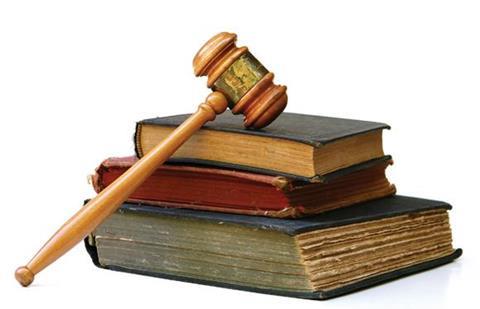DLA Piper’s Richard Norman and James Watson offer expert advice on what to do when a commercial dispute lands on your desk

When a dispute arises, a risk manager/in-house counsel may find it difficult to remember everything they should keep in mind while trying to get to grips with the factual/legal issues and putting in place a litigation strategy. Certain key issues must be considered to minimise risk and to ensure the efficient management of the dispute, regardless of its nature. Below is a checklist of key steps on how to deal with a dispute.
Identify the issues
You should identify the main issues central to the dispute (including relevant governing law/jurisdiction). This will assist in determining your objectives and help devise a strategy to resolve or settle the dispute. It will also ensure that any search for further information is focused and cost-effective.
Consider insurance cover
The next step is to determine whether the dispute is, or may be, covered by insurance, including legal expenses insurance.
Ask yourself whether you need to notify insurers. Policy terms may require notification of the circumstances, even if an actual dispute has not yet arisen or even if the issue raised appears to lack merit. Failure to do so could result in the insurer refusing to provide cover.
Time limits
Check the applicable time limits, whether contractual or statutory, and, in particular, check if any limitation period is about to expire.
It is also vital to ascertain, if appropriate, which court-prescribed pre-action protocol is relevant and the applicable timescales.
If you have been served with a court document, arbitration proceedings or other formal notification of a claim, determine the time limit for responding. What are the risks if you fail to respond within this time limit?
Documents (including electronic documents) and property
Devise a strategy for identifying, locating, preserving, collecting and reviewing documents. The definition of “document” in some jurisdictions is broad and can cover electronic documents, such as email, photographs, plans, Microsoft Calendar items, pictures and logos or html documents.
The disclosure obligations should be communicated to employees and any routine document destruction should also be halted.
The creation of new documents should be controlled, particularly internal communications, as these may be discloseable.
Other points to consider include what documents are required from the other side or non-parties and whether it is necessary to preserve the subject matter of the dispute, for example, if it relates to property/goods supplied.
People involved
In light of the issues, identify who is involved so that you can contact them to find out more information about the dispute and interview them.
Check whether anyone has left the business and put in place procedures for staying in contact with all relevant witnesses. Are they still on friendly terms with the business? Is anyone not in contact? Assess whether this will cause any difficulty in dealing with the dispute. Another element is to consider whether your opponent’s former employees can be contacted as they might be prepared to help you.
Team selection
Determine whether and when an expert should be instructed if, for example the dispute involves a technical issue.
Consider whether and at what point to call your external lawyers and, for multi-jurisdictional matters, whether and when to instruct overseas lawyers. Finally, consider the benefits of an early merits assessment to assist in agreeing a commercial strategy that fits your business objectives.
Value/cost/benefit
How much is the dispute worth? Can the other party afford to pay the claim? You need to determine where the assets for enforcement are.
Is there an ongoing commercial relationship? This will be relevant in any settlement negotiations.
The likely cost of pursuing/defending a claim should be calculated. Do you need to call your external lawyers and obtain a case budget? A case budget will help control costs.
Settlement, dispute resolution and alternative dispute resolution (ADR)
Most disputes are settled without the need for formal proceedings and, usually, it is best to start negotiations as soon as possible before matters become too acrimonious.
If there is a written agreement, check the dispute resolution provisions. Is there an agreed escalation process to follow? Are these procedures obligatory
or can you decide how to determine the dispute?
Even if there is no agreed dispute resolution process, consider whether forms of ADR, such as mediation, would be useful/cost-effective at this stage.
Risk, regulatory and reputational issues
Ask yourself whether this is a business-critical dispute or whether regulatory intervention is possible. Then, determine whether immediate action is required to prevent any further potential damage from arising (for example, a product recall) and whether you need assistance in managing the process.
Which parts of the business should be consulted and does the board need to be involved?
If there is a risk of adverse publicity, find out whether you require professional assistance to deal with the potential publicity.
If the dispute involves a jurisdictional issue, acting quickly is important to ensure that proceedings are determined in this jurisdiction.
Assess whether you need an immediate injunction, freezing order (when the other side is at risk of dissipating assets) or a search order (when the other side may destroy evidence), in which case speed will be vital.
Correspondence
Identify who will communicate with the opposite side and team members. This will ensure an efficient and co-ordinated approach.
In many jurisdictions, only communications made between the lawyer and their client for the purpose of giving or obtaining legal advice will be privileged. Creating documents for administrative or management purposes will not generally be considered privileged. Ensure that privilege is maintained by not disclosing privileged material to the other side or by making sure that it does not go in the public domain. Keep all privileged material separate.
Keep any communications with your external lawyers in a separate file and control to whom any advice is circulated within the business to maintain privilege. Further, consider whether to make an offer/explore a resolution. If so, ensure any correspondence is marked “without prejudice”.
Richard Norman is a partner and James Watson is a senior associate at DLA Piper UK LLP
Disclaimer: This article is an overview and discussion of the subjects dealt with. It is not intended to be, and should not be used as, a substitute for taking legal advice in any specific situation. DLA Piper will accept no responsibility for any actions taken or not taken on the basis of this article.
Downloads
Legal Q&A
PDF




















No comments yet